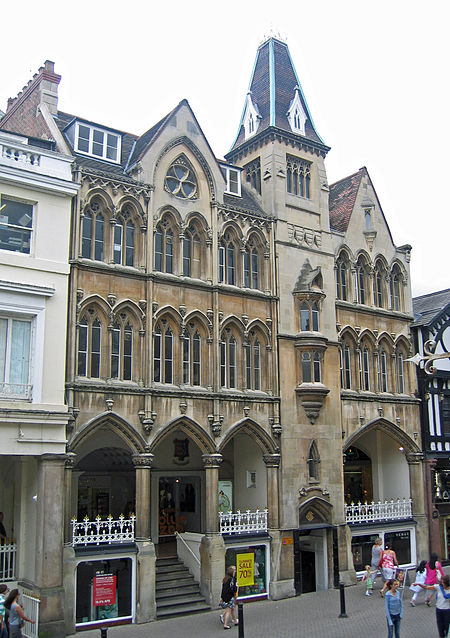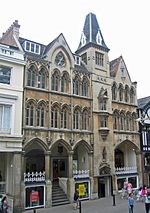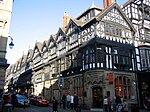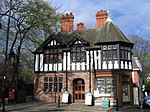Crypt Chambers
Commercial buildings completed in 1858Department stores of the United KingdomEngvarB from September 2013Gothic Revival architecture in CheshireGrade I listed buildings in Chester ... and 2 more
Medieval architectureThomas Mainwaring Penson buildings

Crypt Chambers (or Crypt Building) is at 28–34 Eastgate Street and 34–40 Eastgate Row, Chester, Cheshire, England. It is recorded in the National Heritage List for England as a designated Grade I listed building and incorporates a section of the Chester Rows.
Excerpt from the Wikipedia article Crypt Chambers (License: CC BY-SA 3.0, Authors, Images).Crypt Chambers
Eastgate Street South Row, Chester Newtown
Geographical coordinates (GPS) Address Nearby Places Show on map
Geographical coordinates (GPS)
| Latitude | Longitude |
|---|---|
| N 53.19046 ° | E -2.89031 ° |
Address
Eastgate Street South Row
Eastgate Street South Row
CH1 1LE Chester, Newtown
England, United Kingdom
Open on Google Maps










